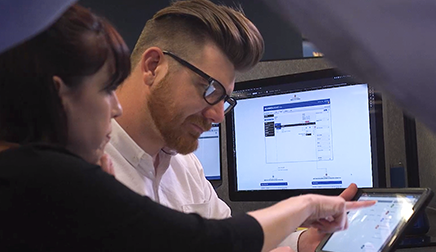This Ain’t Your Father’s Collision Industry
The collision industry amazes me. Mostly in a good way. Today’s rapidly changing technologies keep things interesting. New materials, such as ultra high strength steel, plastics, composites and other materials offer up challenges we didn’t have to deal with in “the good old days.”
But perhaps the most challenging aspect of repairing newer vehicles remains the ever-increasing use of electronic systems. We no longer see “cars” in the shop, we see rolling computers.
It’s hard to keep up, but we must! A repair done wrong can be hazardous to the driver, his passengers and those sharing the road. And let’s not even mention the liability issues involved of a repair not performed to OEM standards.
Has the collision business really changed all that much? Every day, I meet someone in a shop who says, "We are not having any issues with newer vehicles."
My next question is usually, "Well, how do you know how to repair them properly so that the family you put back in that car is safe and the vehicle will perform correctly? The response is often one I was hoping NOT to hear, "My technicians are the best. We've been doing it this way for 30 years and we know how to fix cars."
Like I said, this industry amazes me. So what's changed in the last 30 years from a technology standpoint:
- Downloadable music has replaced CDs, which replaced cassette tapes, which replaced 8-Track cartridges.
- Streaming video, DVRs and DVDs replaced VHS and Betamax (new on the market 30 years back).
- Thirty years ago, Radio Shack had the hottest computer system on the market… The TRS 80. And IBM marketed a personal computer with a 10Mb hard drive and 128Kb of RAM.
- And let’s not forget portable TVs with telescoping antennas.
Yeah those early 80s were crazy years. There are many more examples of emerging technologies, but you get the picture.
Vehicles from 30 years ago did not include dozens and dozens of control modules and sensors monitoring, regulating and directing everything. They did not have side-impact air bags or onboard navigation. They did not have collision-avoidance or hands-free parking systems. They did not have blind spot sensors, adaptive cruise control or lane departure warning systems. How about ABS, TPMS, ESC and all those other initials? Nope!
The only way to properly and safely repair vehicles today is by referencing OEM information. As one shop owner has said, “Without it, you’re flying blind!”
Here are two specific examples of new technologies that 30-year-old experience can’t fix without up-to-date manufacturers’ information. These brief excerpts from OEM-issued information have been edited for the purpose of this article.
Certain 2013 Chrysler® Vehicles
Indicator for the Blind Spot Monitor is Flashing or on Continuously
The blind spot monitor indicator in either outside mirror may be flashing or on continuously. On further inspection the technician will Not find any DTC's.
- Using a scan tool, verify no Blind Spot Monitor DTC's are set.
NOTE: Install a battery charger to ensure battery voltage does not drop below 13.2 volts. Do not allow the charging voltage to climb above 13.5 volts during the flash process.
NOTE: If this flash process is interrupted/aborted, the flash should be restarted.
- Using a scan tool, check the part number of the LBSS and RBSS.
- Does the part number end with AB?
- Yes – Proceed to Step # 3.
- No – This bulletin doesn't pertain, normal diagnostic should be performed.
- Flash reprogram the LBSS and RBSS.
Certain 2013 – 2014 Subaru® Vehicles
Event Data Recorder (EDR) Function of Airbag Module
This vehicle is equipped with an event data recorder (EDR). The main purpose of an EDR is to record, in certain crash or near crash-like situations such as an airbag deployment or hitting a road obstacle, data that will assist in the understanding how a vehicle's systems performed. The EDR is designed to record data related to vehicle dynamics and safety systems for a short period of time, typically 30 seconds or less. The EDR in this vehicle is designed to record such data as:
- How various systems in your vehicle were operating;
- Whether or not the driver and passenger safety belts were buckled/fastened;
- How far (if at all) the driver was depressing the accelerator and/or brake pedal;
- How fast the vehicle was traveling.
This data can help provide a better understanding of the circumstances in which crashes and injuries occur.
NOTE: This repair/service information is excerpted from information published by the vehicle manufacturer, and intended for the purpose of promoting OE collision repair information to trained, professional technicians with the knowledge, tools and equipment to do the job properly and safely. Before attempting any repairs described, refer to the complete article in ALLDATA Collision S3500. It is recommended that these procedures not be performed by “do-it-yourselfers.”
Karl Kirschenman, ALLDATA Collision Product Manager, holds a Bachelor of Science degree in communication. He has over 10 years of experience in the collision industry.
©2013 ALLDATA LLC. All rights reserved. All technical information, images and specifications are from ALLDATA Collision S3500. ALLDATA and ALLDATA Collision are registered trademarks of ALLDATA LLC. Chrysler is a registered trademarks of Chrysler Group LLC. Subaru is a registered trademark of Subaru of America, Inc. All other marks are the property of their respective holders.
The ALLDATA Tech-Assist team fields cases like this every day. See how Tech-Assist can help your shop save time and money with on-call diagnostic support from ASE-certified Master Technicians. More Tech Tips
Not an ALLDATA customer? For access to this valuable experience-based repair data and reliable OEM information, start a free trial today.
If you would like to read more articles like this one please subscribe to ALLDATA News.






